I have a self referencing table, which represents hierarchical trees of attributes. There can be multiple roots in the tree (or multiple trees, however you want to think about it):
The table allows me to create definitions of hierarchies such as:
Now I need, for a given user, to capture values for attributes within the tree. A user can have multiple sets of attribute values and each attribute ancestor can also have multiple sets of values:
The table allows me to assign values to attributes within a hierarchy where there can be multiple instances of each attributes and their ancestors:
So effectively, I now have two self referencing tables. One is a definition of the attribute hierarchies, and the other is a hierarchy of the values. The value hierarchy relates to the definition hierarchy and a specific user.
My issue is one of referential integrity.
How do I enforce that a UserAttribute record is related to the correct parent UserAttribute, based on the Attribute hierarchy. If I an attribute B parented to A, I shouldn't be able to create a UserAttribute related to Attribute B who is parented to a UserAttribute that is related to attribute C.
Originally I thought I would:
- Make a composite primary key on the Attribute table based on AttributeID and ParentAttributeID.
- Make a composite primary key on the UserAttribute table based on the UserAttributeID and the AttributeID
- Create a self reference on the UserAttribute table using the composite key
- Relate the UserAttribute table to the attribute table using the composite primary key
The issue is that root records int the Attribute table have a null ParentAttributeID and root records in the UserAttribute table have a null ParentUserAttributeID, and columns in a composite key can't have nulls so that puts the kybosh on that plan.
Is there some way to achieve this either to a total different schema or slight tweaks to my existing schema? Perhaps I am not modelling this appropriately.



